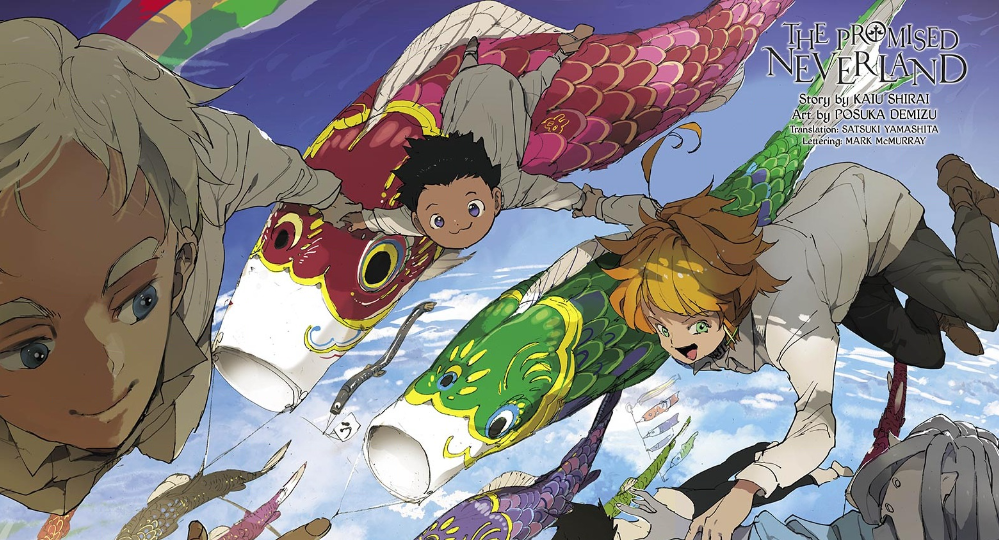Manga Review: The Promised Neverland story by Shirai Kaiu, art by Demizu Posuka
Note: While I will be speaking about the ending of the manga in only vague terms, spoiler-phobic people should be aware I will be speaking about the ending.
Life is good for Emma, Norman and Ray. True, they’re orphans, but Grace Field Orphanage is a great place to live. Fresh air and exercise, a big library and a strong educational program, yummy food, and all presided over by the benevolent Mom. The only thing better is if you’re adopted by a real loving family and go off to live with them. The adopted kids must be happy, since the remaining ones never hear from them again. Wait, where did that ominous music come from?

By the end of the first chapter, Emma and Norman have learned the horrible truth–the children who leave aren’t being adopted, they’re eaten by “demons”, and Mom is in on it! They soon convince their friend Ray (he’s had his suspicions for a while) and start forming plans to escape Grace Field.
It’s not going to be easy; they’re just children, the oldest of whom is eleven, and Mom is a cunning foe whose has anticipated many of their possible moves. Moreover, Emma insists that it can’t just be the main trio who escapes, but all the children!
This manga began running in Shounen Jump Weekly in August 2016, shortly after several long-running series had ended. It quickly established itself as the best of the newcomers, with good art, a strong plotline, and excellent characters. Emma was the best female lead for a Jump title in years. and Mom (birth name Isabella) was the best female antagonist possibly ever.
The first long plot arc was a masterpiece as the outgunned children have to rely on their wits against the adults who control them.
Once the children escape, the story swiftly shifted from survival horror to a somewhat more standard adventure series; Emma doesn’t stay unarmed for long. But the stories continued to spotlight both battles of sneaky intelligence, and Emma’s determination to save as many people as she can. Once outside, the children swiftly learn that not all demons are alike; and not all humans can be trusted.
The demon society offers up some room for social commentary. (Lots of meat eating metaphors!) At one point, it’s explained that merely replacing Mean Leader with Kind Leader isn’t going to solve problems in the long run without fixing the corrupt system that put Mean Leader in charge.
One note that did cause some concern early on was the physical presentation of Sister Krone, who assists Mom at Grace Field. She’s the only adult woman of color for most of the run, and her exaggerated features evoke both the “Mammy” and “dark-skinned people are animalistic” stereotypes. It’s worth remembering that Japan has a very different history with black people and it isn’t quite meant to come off that way.
Content notes: children in peril pretty much constantly, mutilation, suicide, genocide.
The ending of the series is bittersweet, but I think it does a good job of reaffirming the positive themes of the story.
Overall: A superior manga series for junior high readers on up (parents of more sensitive kids may want to pre-screen) and highly recommended at least until the end of the first story arc. Later story arcs are a bit weaker.
And of course there is an anime adaptation:

